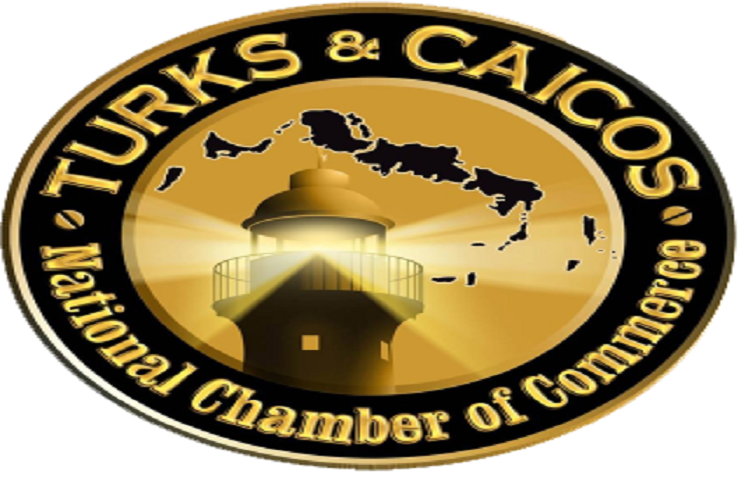News
Press Release Chamber of Commerce
Published
8 years agoon

#TurksandCaicos, September 15, 2017 – Providenciales –
After the Disaster . . . What Should I Do Now?
Information to Help Small Business Owners Make Post-Disaster Business Decisions
By Daniel J. Alesch, James N. Holly, Elliott Mittler, and Robert Nagy
University of Wisconsin-Green Bay Center for Organizational Studies
Published by the Public Entity Risk Institute On the Web at: www.riskinstitute.org
Public Entity Risk Institute
The Public Entity Risk Institute’s mission is to serve public, private, and nonprofit organizations as a dynamic, forward thinking resource for the practical enhancement of risk management. PERI pursues its mission by:
Facilitating the development and delivery of education and training on all aspects of risk management, particularly for public entities, small nonprofit organizations, and small businesses.
Serving as a resource center and clearinghouse for risk management, environmental liability management, and disaster management information.
Operating an innovative, forward-looking grant and research program in risk management, environmental liability management, and disaster management.
For complete information on PERI’s programs and information services, visit our Web site at www.riskinstitute.org.
To access a wealth of risk management intelligence, visit the Risk Management Resource Center, at www.eriskcenter.org, a collaborative Web site operated by PERI, the Public Risk Management Association (PRIMA), and the Nonprofit Risk Management Center (NRMC).
Public Entity Risk Institute
11350 Random Hills Road, Suite 210
Fairfax, VA 22030
Phone: (703) 352-1846
FAX: (703) 352-6339
Gerard J. Hoetmer
Executive Director
The Public Entity Risk Institute (PERI) provides these materials “as is,” for educational and informational purposes only, and without representation, guarantee or warranty of any kind, express or implied, including any warranty relating to the accuracy, reliability, completeness, currency or usefulness of the content of this material. Publication and distribution of this material is not an endorsement by PERI, its officers, directors or employees of any opinions, conclusions or recommendations contained herein. PERI will not be liable for any claims for damages of any kind based upon errors, omissions or other inaccuracies in the information or material contained on these pages. PERI is not engaged in rendering professional services of any kind, and the information in these materials should not be construed as professional advice. Users bear complete responsibility for any reliance on this material, and should contact a competent professional familiar with their particular factual situation if expert assistance is required.
Business Survival is not Assured by Reopening the Doors
During a PERI-funded research project, we worked with more than 120 small business owners and managers of not-for-profit organizations all across the country to understand what happens to them following various natural disasters.
We’ve talked with some a few months after the disaster, with some as many as seven years after the event, and, with still others, every year for five years after the disaster.
We’ve reached several important conclusions that should weigh heavily on any business owner’s decisions about what to do with his or her business in the aftermath of a major disaster:
First, we have concluded that disaster events cause problems for businesses unrelated to the amount of direct damage they sustain from the event and from related events, like fire following an earthquake.
Second, we found that, unless the business owner makes good decisions about recovery, the largest losses to the business come in the years after disaster and not from the direct damage of the disaster itself.
Third, we found that, following any large scale disaster in a community, things never get “back to normal.” The community almost always changes permanently, ______________________This article is a supplement to a research project report — Organizations at Risk: What Happens When Small Businesses and Not-for-Profits Encounter Natural Disasters — written by the same authors and published by the Public Entity Risk Institute (PERI).
The research project was supported with a grant from PERI. The complete report is available at no charge on the PERI Web site, at www.riskinstitute.org. It is located in the Publications, Tools, Resources section of the site, in the list of Disaster Management materials.
Printed copies of Organizations at Risk, also available at no charge, can be requested through the Web site, or by contacting PERI at:
Public Entity Risk Institute
11350 Random Hills Rd., Suite 210
Fairfax, VA 22030
Phone: (703) 352-1846
Fax: (703) 352-6339
Creating a new business environment in which doing business the old way often results in operating at a loss for years and, then, when all equity in the business is used up, going out of business.
Finally, we found that it is possible, if an owner takes the right steps, to not only survive a major natural disaster, but to achieve real business viability in the postevent environment.
Among the factors that significantly contributed to business failures are:
- The effect the disaster event has on the customer base.
- The kinds of products or services the business provides.
- The business’ inability or unwillingness to respond appropriately to the new, post-event environment.
- The overall financial strength and stability of the business before the event.
- The owner’s inability or unwillingness to recognize the options available.
What to Expect in the Weeks and Months Following the Disaster
Your personal life will become stressful and uncertain following the event, even if you did not lose anyone close to you in the disaster. You are likely to experience considerable ambiguity, particularly if both your home and your business were damaged. For many business owners, stress will come simply from memories of the experience. You, or members of your family, may experience difficultly sleeping soundly. Much of the stress will come because your primary source of income is gone, at least temporarily. Some stress will be passed on to you from stressed employees. There will be stress around insurance delays, questions about coverage, and settlements. You may find yourself stressed about things you wish you had done, but there is little to gain in “I wish I woulda . . .” laments. Finally, all the stress around the business and loss usually leads to increased stress at home.
In your business neighborhood, there will almost always be an underlying assumption on the part of business people, property owners, and public officials that “things will get back to normal soon,” but they will not. We found that there is often social pressure from other business people in the damaged area to get back into business and to make things like they were before.
You will receive little information about rebuilding plans from the city or from owners and much of that information will be contradictory or wrong. State and local governments may be slow to respond with needed variances and recovery policies.
Many people who lived in the damaged area and either lost their homes or experienced other losses will move away, many of them permanently. Volunteers and others will be there to help clean up, but they, too, will disappear as the physical evidence of the disaster is trucked away.
Fundamental changes in the community will already have begun. Neighborhood trends that had started before the event are likely to speed up. The neighborhood will change forever, even if the buildings are put back just the way they were before the event. A new set of relationships, new neighbors, and new business patterns will develop.
The businesses that survive will be those whose owners and managers understand and adapt to the new business environment.
Options to Consider and Questions to Answer Before You Spend a Lot of Money to Reopen Your Business
Perhaps the most difficult factor for a business owner to deal with is recognizing the available options. In our research, we found that many owners failed to see that they had alternatives available to them; in so doing, they severely limited themselves and their potential responses to the disaster. Too many business owners simply continued, after a disaster event, to do what they had done before the disaster event. Their failure to consider the available options made it difficult to respond appropriately to the new, post-event environment. Most of these businesses fell by the wayside.
However, a few entrepreneurs did consider the options available to them. In doing so, they were able to devise or, in some cases, they just happened upon, recovery strategies that enabled them to avoid almost certain failure. These strategies frequently led to profitable futures.
The suggestions included here for post-disaster business recovery are predicated on your willingness to consider the options available to you as a business owner and your desire to make informed business decisions.
We’ve put together, based on our research, a series of things to consider and questions to answer that will help you develop a sensible post-disaster strategy. That strategy is intended to increase the probability that your firm can become financially viable in the post-event environment.
FIRST, REALLY UNDERSTAND YOUR BASIC OPTIONS
After a major disaster, almost every small business owner says, “Wow, that was quite a bump in the road. Time to get back to business.” And then he or she continues doing the same things in the same way, assuming things will get back to normal.
Following major disasters such as a strong earthquake, a major hurricane, widespread flooding, rioting and civil disruption, or a devastating terrorist attack, things change forever. What that means is that your business environment is changed and that what worked well in the past may not work at all now, especially in your current location.
When a major disaster affects you, your financial survival depends on how well you make decisions in the new environment. One of the very first things you should do is identify the basic options that are available to you. It is not good enough to say, “Well, this business is what I do. It is the only thing I know.” You have to consider other things.
We think that, initially, you have at least three basic options available to you.
Option One – You can reopen your business.
Option Two – You can close your business.
Option three – You can (try to) sell or transfer the business to someone else.
Too often, in the stressful aftermath of disaster, a business owner chooses to reopen his or her business without considering or even knowing about the alternatives available, factors to consider, or the potential consequences of his or her actions. Some additional information about how to pursue each option, which may influence your choice of options, is provided below. This additional information should be studied before any decision is made. (The advantages, disadvantages and other issues to consider when deciding whether or not to reopen your business after a disaster are discussed in the next section of this article.)
Option One – Reopen Your Business
- You can finance your business reopening with company assets, personal saving, low-interest loans, traditional loans, insurance proceeds, investment, family loans, credit cards, and so forth.
- You can reestablish your business at the same location or you can relocate your business. (Some loans and grants have conditions that prohibit relocation.)
- You can reopen your business offering the same products and services you provide before the disaster event or you can change, in part or entirely, the products and services you provide.
Option Two – Close Your Business
- You can walk away.
- You can liquidate the business
- You can start a new business with new product/services or the same product/service you previously provided.
- You can go to work for someone else.
- You can retire.
Option Three – You Can (Try To) Sell or Transfer the Business to Someone Else
- You can sell or transfer the business to your children. (If they are interested in running a business.)
- You can sell or transfer the business to a competitor.
- You can turn over the business to a relative or former employee.
These options are not singular or mutually exclusive. For example, you may walk away from one business and start a new business, in a new location, that provides products and services, which may be the same or different from your previous business.
Very likely, you will be able to think of other options. The three basic options we’ve outlined are just for starters – something to get you thinking.
SECOND, ANSWER THESE QUESTIONS BEFORE DECIDING WHETHER TO REOPEN YOUR BUSINESS
What Happened and What Is Happening?
Make an effort to understand what happened and what is happening as a consequence of the event. This is a difficult assignment because everything will be in flux, surrounded in ambiguity, and changing rapidly. Information will be unreliable. That means that one quick look around will not be enough. The problem is that you need accurate, reliable information on which to make sensible decisions about your business in the post-disaster environment. You will have to be engaged in a continuous effort to know what is going on in your neighborhood, your business community, and your local jurisdiction.
What Happened to Your Customers?
If you are in manufacturing or wholesaling, it is likely that your customer base is geographically dispersed. Only a few of them may have suffered losses from the event. In that case, it is important for you to do what is necessary to ensure that you meet your customers’ continuing needs.
If you suffered significant losses and will have to be closed for some time, it is important to learn what your customers are doing during the time it takes you to reopen. If your customers did not suffer major losses, they may change their buying habits and you may have to fight an uphill battle to win them back. Do your customers still want or need your product or service? Can they afford it?
Whether it makes sense to reopen your business depends mainly on what happened to your customers as a result of the event. If all or most of your customers suffered large losses as a consequence of the disaster, there is little reason for you to reopen quickly, unless you have something they need desperately. For example, it usually makes sense for lumberyards and building supply, pharmacies, physicians, furnishings and appliances, construction, dry cleaning and laundry, and grocery stores to reopen quickly.
However, if you sell goods and services that come from discretionary money, your customers may not be able to afford what you have to offer as they attempt to pick up the pieces. We found that people who had big losses put off spending money at the optometrist, at specialty restaurants, for things like recreational gear, and for jewelry and expensive gifts. Sometimes, your customers may move away. In that case, reopening is like starting over.
How Much Did You Lose and Where Will the Money Come From to Reopen?
If you suffered losses and were not insured, where will the money come from to reopen? Most business owners we talked with used their life savings, borrowed from relatives, used their credit cards, got a little help from suppliers and/or customers, or got loans through the Small Business Administration or from conventional lenders. A few got loans or grants from local government. Do not expect any money from FEMA, the Red Cross, or other disaster assistance organizations – small businesses and small business owners usually are not eligible for that kind of assistance.
Before you decide to use your life savings or borrow money from organizations that require you to use your home and other personal assets as collateral, it makes sense to take a very serious look at your business prospects in the post-disaster environment. There is a very good chance that your old business plan is no longer viable, depending on what happened to you and your customers.
We talked with dozens of small business owners who used all their savings to reopen a business that went nowhere in the post-disaster environment. They lost their savings and the business. Often, reopening after a major disaster is like starting a new business. Banks and the SBA will probably be willing to loan you money to reopen based on your experience before the disaster, but, before you make that commitment, make sure you have a solid business plan for the post-disaster environment.
Before you reopen, understand fully that things will never be the way they were before. Last year’s business plan is dead as a dodo. It is time to conduct a new feasibility analysis and to rebuild your pro forma and cash flow analysis before committing any cash to the new venture. If you can reopen without putting any significant amount of money into the venture and you have good reason to expect your customers to be there, then go ahead. But, unless you have a service or product that people need desperately, expect that your business will not be what it was before the event for a long time.
In any event, it makes sense to be cautious. Be cautious about how you use your insurance proceeds; don’t confuse cash flow with investment. Be wary of taking loans that require you to use personal assets, like your home, as collateral. Be wary of taking loans that will be forgiven if you stay in the same business in the same location. You may be far better off moving to a new location.
If you are at or near retirement age, you will want to think particularly carefully about reopening the business. Many people we interviewed put their savings back into a business that did not survive the next five years. You may be better off liquidating your business assets and putting your money in safer investments. Sometimes, even if your alternatives look bleak, it still makes sense to walk away.
If you had insurance that covered most of your losses, you are in the minority of small business owners. Many small firms will have experienced uninsured disaster related losses from damage to their plant or equipment, their inventory, and to the building they rent or own. Many more lose money from uninsured business interruption in the chaotic period following the disaster.
How Strong Was Your Business Before the Event?
How Well Is Your Firm Positioned with Regard to the Dominant Trends in Your Industry? Even if your organization was doing well before the disaster, it is important for you to take a hard look at where your firm is with regard to dominant trends in the area where you do business. Retail patterns are, of course, changing. Small town, downtown merchants are having a tough struggle against giant chain retailers located on the outskirts of town. If your firm is positioned favorably with regard to industry trends, your chances of surviving a disaster are much better than if your firm is in an uphill fight against major trends.
Only you will know how strong your business was before the disaster. If you were losing out to the competition before the disaster, there is no reason to believe you can do better after the disaster. If your firm was doing well, growing and becoming more profitable each year, chances are you can do well after the disaster, provided you can retain your customers in the unsettled times after the event.
Are You Able to Give What It Is Going to Take?
It takes a lot of energy and commitment to start a new business. You know that. You’ve done it. Remember that, following a real disaster, it usually takes that same level of commitment and energy to revitalize a business that has suffered a disastrous event. Ask yourself whether you still have the drive needed to do it again. If so, good luck with your venture. If not, it makes a lot of sense to reconsider your options.
You may like
News
Beaches Turks and Caicos Showcases and Supports Local Creativity
Published
3 months agoon
September 12, 2025
September 12, 2025
PROVIDENCIALES, Turks & Caicos Islands – The Turks and Caicos Islands are home to a wealth of creativity, from artisans and craft vendors to musicians and performers. Beaches Turks and Caicos, the Caribbean’s leading all-inclusive family resort, has pledged its continued support for these individuals by providing meaningful platforms for them to share their skills and stories with guests from around the world.
The resort’s commitment is most evident in its weekly Cultural Night showcase, where visitors are immersed in the vibrant traditions of the islands. Guests enjoy live performances which feature local music genres such as ripsaw, while artisans display and sell handmade creations. This event not only enriches the guest experience but also strengthens economic opportunities for local entrepreneurs.
Entertainment Division Manager Garett Bailey emphasized the significance of Cultural Night, “we want to showcase everything the Turks and Caicos Islands culture has to offer. Our goal is for guests to leave with a deeper appreciation of the island’s art, music and traditions, while giving local talent the opportunity to share their creativity with visitors from across the globe.”
Beyond Cultural Night, Beaches Turks and Caicos also welcomes local craft vendors onto the resort every Wednesday and Friday where they are offered a direct space to market their goods. Guests have easy access to the Turks and Caicos Cultural Marketplace, where they can purchase authentic local arts and crafts.
where they are offered a direct space to market their goods. Guests have easy access to the Turks and Caicos Cultural Marketplace, where they can purchase authentic local arts and crafts.
Managing Director, James McAnally, highlighted how these initiatives reflect the resort’s broader mission, “we are committed to celebrating and sharing the vibrant culture of these islands with our guests. By showcasing local artistry and music, we not only provide entertainment but also help sustain and grow the creative industries of the Turks and Caicos Islands. From our cultural showcases to nightly live music, we are proud to create authentic connections between our guests and the people of these islands.”
Local musician Keon Hall, who frequently performs at the resort, expressed gratitude for the ongoing partnership, “being able to share my music with Beaches’ guests has created lasting relationships. Some visitors return year after year and request songs from previous performances. This partnership continues to celebrate what we do and strengthens the bond between local artists and the resort.”
The resort’s support of local artisans and entertainers extends beyond business opportunity; it is about preserving heritage and sharing stories. Guests take home more than souvenirs; they leave with experiences that deepen their understanding of Turks and Caicos’ culture and history.
Public Relations Manager, Orville Morgan, noted the importance of this commitment, “for many visitors, these interactions represent their first genuine connection to the Turks and Caicos Islands. From artisans and musicians to farmers and transport operators, our local talent helps shape every guest experience. At Beaches, we are proud to give them the stage to share their stories and their heritage.”
Beaches Turks & Caicos remains dedicated to developing cultural connections and supporting the artisans, musicians and entrepreneurs whose creativity makes the Turks and Caicos Islands unique. Each guest experience is an opportunity to celebrate and sustain the spirit of the islands.
Caribbean News
“Barbecue” is Cooked! US Turns Over 11 Million Haitians into Potential Informants with $5 Million Bounty
Published
4 months agoon
August 12, 2025
August 12, 2025
The United States just set fire to the underworld in Haiti — and this time, the smoke might finally flush out the man many call the most feared in the Caribbean.
On Tuesday, the U.S. government slapped a $5 million bounty on the head of Jimmy “Barbecue” Chérizier, the ex-police officer turned gang boss accused of orchestrating massacres, torching neighborhoods, and strangling Haiti’s capital into chaos. This isn’t just a headline — it’s a full-blown game-changer.
turned gang boss accused of orchestrating massacres, torching neighborhoods, and strangling Haiti’s capital into chaos. This isn’t just a headline — it’s a full-blown game-changer.
That kind of cash — offered under the State Department’s Transnational Organized Crime Rewards Program — is enough to turn the country’s entire population, more than 11 million people, into potential informants overnight. Add the millions in the Haitian diaspora, and Chérizier isn’t just wanted. He’s surrounded.
The Number That Changes Everything
Five million U.S. dollars today equals about 655 million Haitian Gourdes. In a country where many scrape by on less than $5 a day, that’s not just life-changing — it’s life-defining. It’s enough to rebuild homes, put generations through school, or buy a one-way ticket far from the gunfire.
In a place where trust is scarce and survival is everything, that figure is more than tempting — it’s irresistible. For Chérizier, it means every friend could be a future informant, and every loyalist might be calculating the cost of staying loyal.
‘We Will Find Them’ — Jeanine Pirro, U.S. Attorney
Jeanine “Judge Jeanine” Pirro, the U.S. Attorney, set the tone with fire in her voice. “This indictment is the first of its kind,” she announced. “Jimmy Chérizier, also known as ‘Barbecue,’ is a notorious gang leader from Haiti who has orchestrated and committed various acts of violence against Haitians, including the 2018 La Saline attack in which approximately 71 people were killed. He both planned and participated in that massacre.
“Anyone who is giving money to ‘Barbecue’ cannot say, ‘I didn’t know.’ They will be prosecuted, and we will find them. They are supporting an individual who is committing human rights abuses, and we will not look the other way.”
Pirro wasn’t just going after Chérizier. She was sending a warning to the Haitian diaspora accused of feeding his war chest from abroad: the days of claiming ignorance are over.
‘No Safe Haven’ — Darren Cox, FBI
Then came Darren Cox, Deputy Assistant Director of the FBI, delivering the muscle of America’s most powerful investigative force. “There is no safe haven for Chérizier and his network,” Cox declared. “We are closing every link, every cell.” Since January, he said, the FBI has arrested three Top Ten fugitives, taken more than 19,000 criminals off the streets, and seized thousands of tons of narcotics — enough to save millions of lives across the U.S.
The FBI’s Miami and Houston offices have already bagged one of Chérizier’s Viv Ansanm associates inside the United States without firing a shot. “These efforts are a deliberate and coordinated plan,” Cox said, “to protect our communities and confront escalating threats from terrorist organizations like Viv Ansanm.”
‘Three-Year Investigation’ — Ivan Arvelo, HSI
Ivan Arvelo, Assistant Director of Homeland Security Investigations, brought the receipts. “This is the result of a three-year investigation into Chérizier’s procurement networks, cash pipelines, and operational financing that violates sanctions,” he explained. Arvelo described 400 structures destroyed, entire communities erased, and a gang exploiting U.S. dollars, technology, and immigration loopholes to keep its killing machine running. “We tracked how Americans unwittingly bankrolled brutality,” he said — proof that the net is tightening both inside Haiti and abroad.
‘The Worst of the Worst’ — Chris Lambert, State Department
Chris Lambert, representing the State Department’s International Affairs division, gave the political bottom line.
“Mass violence in Haiti must end,” Lambert said. “The instability resulting from Chérizier’s actions fuels illegal migration, regional instability, and transnational crime. We will continue to apply every tool available — including our rewards programs — to stop the spread of unchecked violence, especially to target the worst of the worst criminal leaders threatening the people of our hemisphere.”
instability, and transnational crime. We will continue to apply every tool available — including our rewards programs — to stop the spread of unchecked violence, especially to target the worst of the worst criminal leaders threatening the people of our hemisphere.”
Lambert confirmed what many have long known: Chérizier is not just a gang leader. He commands Viv Ansanm, officially designated in May as a Foreign Terrorist Organization. In the eyes of the U.S., that makes him not just Haiti’s problem — but everyone’s.
Why Haitians May Not Resist
In Haiti, money talks — loudly. And when you put 655 million Gourdes on the table, it shouts.
That’s the kind of figure that turns casual acquaintances into informants and makes even the most hardened loyalist wonder if the payout is worth more than the risk. It’s not a matter of “if” word gets out, it’s a matter of “who will be first to collect.”
For grieving families, it’s a chance at justice. For the desperate, it’s a chance at survival. For Haiti as a whole, it’s hope — wrapped in the most dangerous of temptations.
An Answer to Prayers
For years, Haiti’s headlines have been a scroll of horrors — kidnappings, executions, burned neighborhoods, bodies in the streets. Chérizier’s name has been attached to too many of them.
This move by the U.S. isn’t just strategy. It’s personal. It’s a signal to every Haitian — at home or abroad — that the days of impunity could be ending.
I’ll admit it: when I heard the news, I danced, I sang, and I nearly cried. Not because $5 million is a lot of money, but because of what it means — the possibility, at last, of stopping the man accused of helping turn Haiti into hell on earth.
Four officials, four angles, one mission: Pirro’s fire, Cox’s grit, Arvelo’s precision, Lambert’s conviction. Together, they’ve put the heat on “Barbecue” like never before.
BBQ is cooked. The only question now is: which one of over 11 million potential informants will serve him up?
Africa
What If Caribbean Dollars Flowed to Africa? A Trade Revolution Within Reach
Published
4 months agoon
August 8, 2025
By Deandrea Hamilton | Editor
What would happen if the Caribbean started spending more with Africa?
That question is no longer hypothetical. It’s the vision behind a growing movement that sees the Caribbean not just as a neighbor of the Americas, but as a key partner in the rise of a “Global Africa.” With shared history, deep cultural ties, and emerging trade frameworks, experts say the potential is enormous—if the will to act finally matches the passion of the speeches.
Billions on the Table
Today, trade between Africa and the Caribbean sits at just over US $729 million annually. But the International Trade Centre (ITC) and Afreximbank project that number could balloon to US $1.8 billion per year by 2028—more than doubling in just a few years.
This boost is expected to come not just from commodities, but increasingly from services, particularly in transport, travel, food exports, and creative industries. Two-thirds of that growth, according to analysts, could come from services alone—sectors where the Caribbean is eager to expand. (afreximbank.com).
Meanwhile, Africa’s consumer and business spending is forecasted to skyrocket to US $6.66 trillion by 2030, driven by a population boom and rising middle class.
The Case for a New Trade Axis
The Caribbean imports 80% of its food, but many of those goods can be sourced from African markets. What we offer in return? World-class logistics, tourism know-how, financial services, and proximity to the U.S. market. It’s a natural fit—one that is currently underdeveloped.
The recent call by Grenadian Prime Minister Dickon Mitchell for a “Global Africa Commission” underscores this urgency. He urged stakeholders at the Afreximbank Trade Expo to stop the cycle of empty talk and get to work: building shipping routes, finalizing trade agreements, and boosting knowledge of what each region actually has to offer.
urged stakeholders at the Afreximbank Trade Expo to stop the cycle of empty talk and get to work: building shipping routes, finalizing trade agreements, and boosting knowledge of what each region actually has to offer.
“We will not leave here with another communiqué,” Mitchell continued. “We will leave here with a commitment to act, to build together, to trade together, to succeed together and rise together.” The statement underscored a central theme of the summit — that both Africa and the Caribbean can no longer afford to admire the idea of unity; they must operationalize it.Pilot platforms like the Pan-African Payment and Settlement System (PAPSS) are already simplifying how cross-border payments work between African countries—and could extend to Caribbean partners. The system removes the need for U.S. dollars in trade between African nations, creating space for sovereign empowerment.
What’s the Hold-Up?
Let’s be blunt: political will, slow bureaucracies, and lack of coordination are stalling real action. Despite a decade of “Africa–Caribbean unity” talk, less than 3% of CARICOM trade currently involves the African continent. That fact continues to undermine these brave speeches and ambitious notions.
Where Caribbean Consumers Fit In
Caribbean consumers—especially the younger, tech-savvy generation—are already looking for affordable, ethical, and culturally relevant goods. African markets offer exactly that. Redirecting even a fraction of spending toward African-made clothing, beauty products, tech tools, or agro-processed foods could start a real trade revolution.
Bottom Line
If the political leaders won’t build the bridge fast enough, maybe Caribbean consumers will. The money is there. The interest is rising. Now it’s time to turn the “Global Africa” vision into a real economic shift—one shopping cart at a time.
TRENDING
-

 Health3 days ago
Health3 days agoBruce Willis’ Brave Gift to Dementia Research – And His now Quiet Link to Turks & Caicos
-

 USA5 days ago
USA5 days agoUN Welcomes Trump-Brokered DRC–Rwanda Deal, But Keeps Its Distance
-

 TCI News3 days ago
TCI News3 days agoMichael Misick Rejects Government’s 60/40 Shift as Business Licensing Debate Reignites
-

 TCI News3 days ago
TCI News3 days agoTCI Hosts Strategic Defence Summit as Overseas Territories Regiments Strengthen Security Partnerships
-

 world news3 days ago
world news3 days agoHaiti Begins Preparing Polling Stations as Long-Delayed Elections Finally Take Shape
-

 USA3 days ago
USA3 days agoU.S. Attorney Jeanine Pirro Condemns ‘King’ of Haitian 400 Mawozo Gang – Life in Prison for Kidnapping Children, Missionaries





